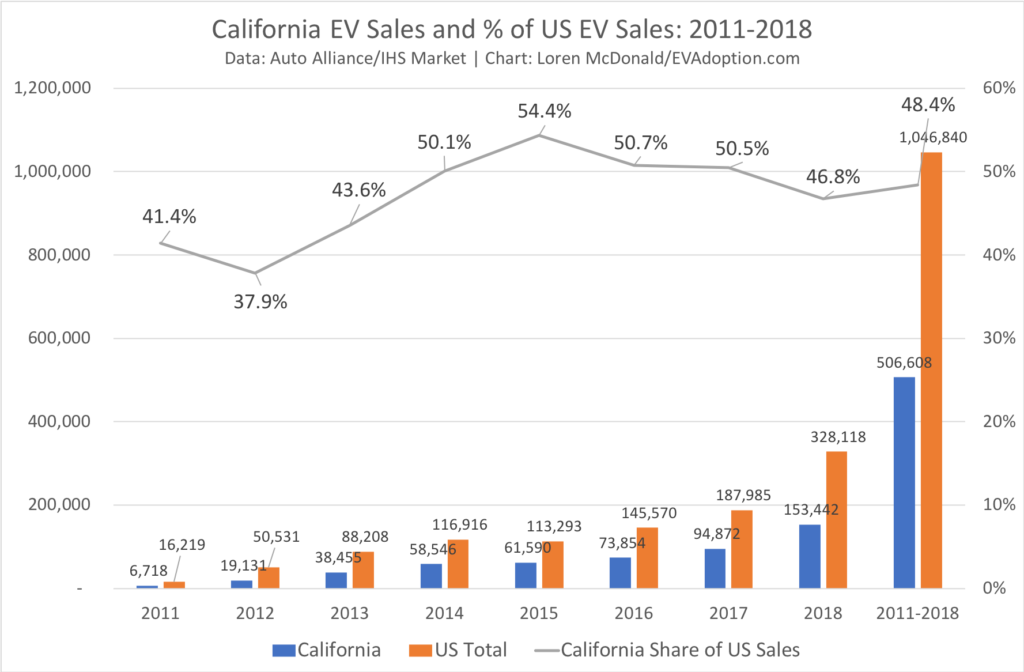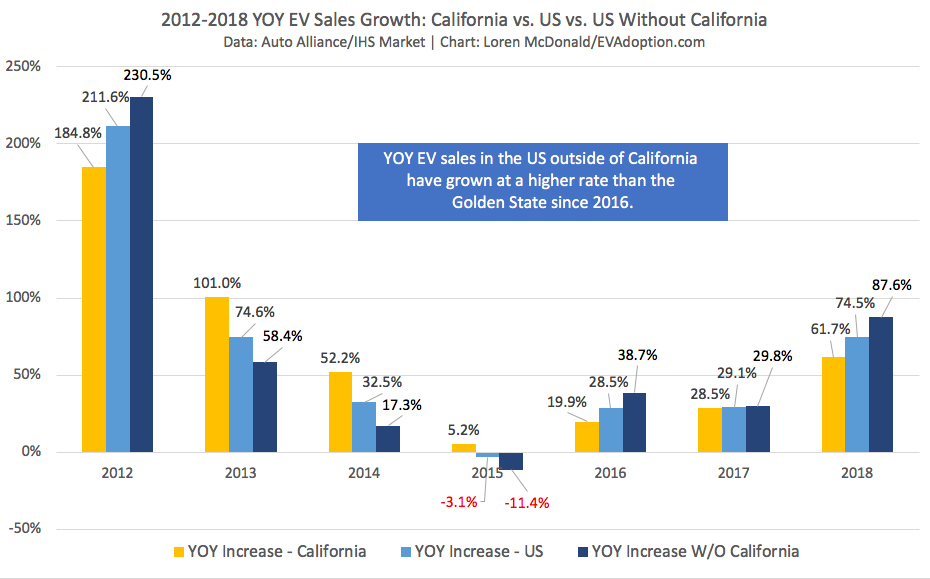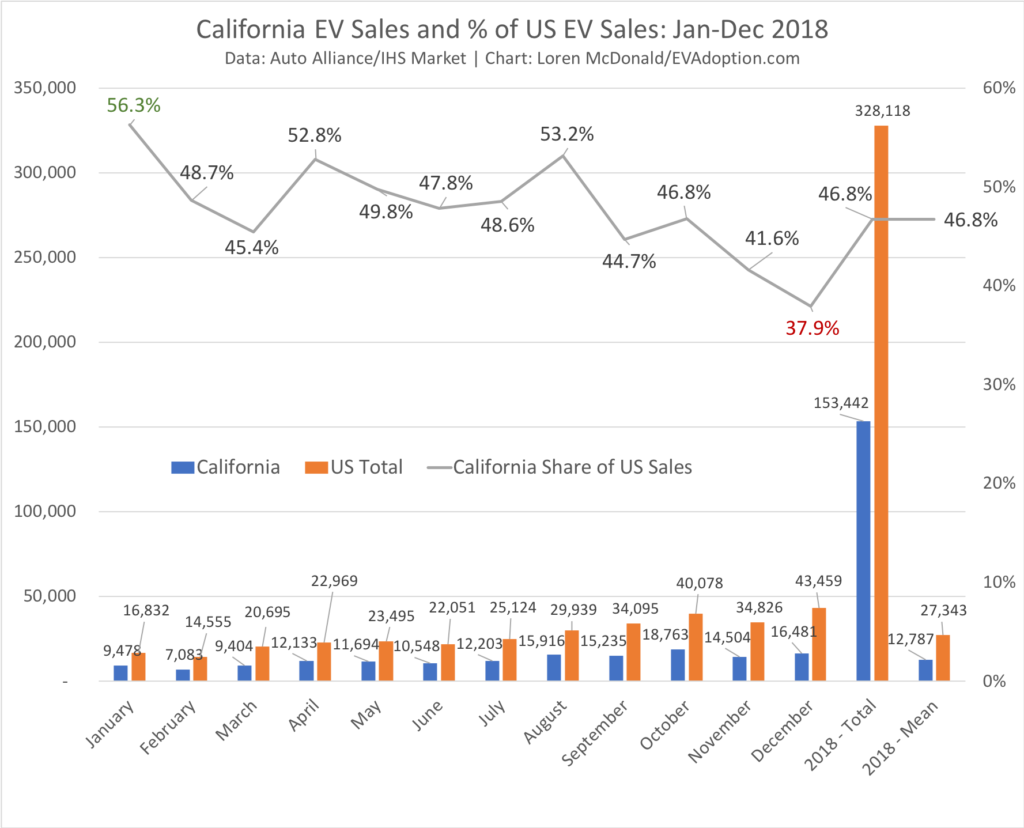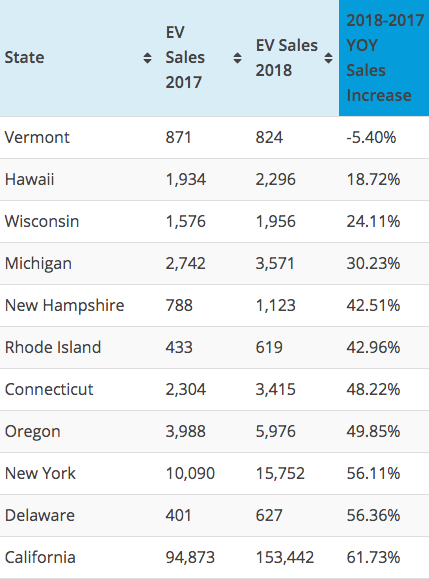California has long been the dominant market for electric vehicle sales in the US, with the state accounting for around 50% of sales the last several years. But after reaching a peak of 54.4% in 2015, California’s share of EV sales has declined and dropped to 46.8% in 2018.

What’s Going On?
The short answer is that most other states and the rest of the US outside of California are seeing annual sales increases at a higher rate than California. Since 2016 in fact, YOY sales growth in the US when excluding California, has outpaced the Golden State each year. This is not surprising since California has such a high base of sales and only four other states sold more than 10,000 EVs in 2018 (New York, Texas, Florida and Washington).
In 2018, YOY sales in the US – but excluding California – increased 87.6% as compared to 61.7% in California. Electric vehicle sales in California were the highest ever at 153,442 units, but the rest of the US purchased more EVs (174,676) than California for the first time since 2013 .

Looking at all of the US states and the District of Columbia, 41 had higher YOY EV sales increases in 2018 versus 2017 than did California (see sortable table).
Looking at the California month-by-month sales and US market share for 2018 sheds some additional light on the trend. While California’s EV sales share was up and down throughout much of the year, the overall trend was downward ending the year at 37.9% from the high in January at 56.3%.

Part of the reason California’s share was likely so high in the early part of 2018 was because of how Tesla initially prioritized deliveries of the Model 3 to buyers in California and the West Coast and the general high demand in California for the Model 3.
While all 39 EVs currently sold in the US are available in California, in many states only a handful of EVs are available through local dealers. The Nissan LEAF and Chevrolet Bolt and Volt have been notable exceptions with general availability in all or most states.
On the flip side, many EVs such as those from Honda, Hyundai, and Kia are only available in ZEV or a selected few states. This limited availability approach by many automakers will continue to limit overall growth in sales of EVs in the US and keep California likely at or near 40% of US EV sales for the next 2 to 3 years.
California overall accounts for around 12% of US auto sales so the rest of the US has a lot of catching up to do when it comes to buying electric vehicles. But while California residents have long been on the leading edge of many trends, especially those related to the environment and technology, it is time for the automakers to step up and drive greater sales throughout the rest of the US by making EVs such as the Honda Clarity PHEV and Hyundai Kona and Kia Niro BEVs available in most or all 50 states.
It is clear from recent sales trends that the US does not have an EV demand problem, but rather a lack of supply from the automakers. The question is, when will they step up to the plate?
 Announcing the acquisition of EVAdoption by Paren →
Announcing the acquisition of EVAdoption by Paren →


One Response